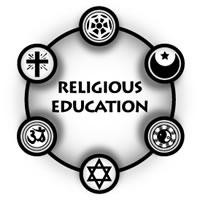Religious Education Years 1 and 2
By the end of Year 1 pupils should have a basic grasp of all of this content. By the end of Year 2 pupils should have an advancing understanding of this content, whilst some will have a deep understanding.
In Years 1 and 2 pupils:
- Describe some of the teachings of a religion.
- Describe some of the main festivals or celebrations of a religion.
- Recognise, name and describe some religious artefacts, places and practices.
- Name some religious symbols.
- Explain the meaning of some religious symbols.
- Identify the things that are important in their own lives and compare these to religious beliefs.
- Relate emotions to some of the experiences of religious figures studied.
- Ask questions about puzzling aspects of life.
- Identify how they have to make their own choices in life.
- Explain how actions affect others.
- Show an understanding of the term ‘morals’.
Religious Education Years 3 and 4
By the end of Year 3 pupils should have a basic grasp of all of this content. By the end of Year 4 pupils should have an advancing understanding of this content, whilst some will have a deep understanding.
In Years 3 and 4 pupils:
- Present the key teachings and beliefs of a religion.
- Refer to religious figures and holy books to explain answers.
- Identify religious artefacts and explain how and why they are used.
- Describe religious buildings and explain how they are used.
- Explain some of the religious practices of both clerics and individuals.
- Identify religious symbolism in literature and the arts.
- Show an understanding that personal experiences and feelings influence attitudes and actions.
- Give some reasons why religious figures may have acted as they did.
- Ask questions that have no universally agreed answers.
- Explain how beliefs about right and wrong affect people’s behaviour.
- Describe how some of the values held by communities or individuals affect behaviour and actions.
- Discuss and give opinions on stories involving moral dilemmas.
Religious Education Years 5 and 6
By the end of Year 5 pupils should have a basic grasp of all of this content. By the end of Year 6 pupils should have an advancing understanding of this content, whilst some will have a deep understanding.
In Years 5 and 6 pupils:
- Explain how some teachings and beliefs are shared between religions.
- Explain how religious beliefs shape the lives of individuals and communities.
- Explain the practices and lifestyles involved in belonging to a faith community.
- Compare and contrast the lifestyles of different faith groups and give reasons why some within the same faith may adopt different lifestyles.
- Show an understanding of the role of a spiritual leader.
- Explain some of the different ways that individuals show their beliefs.
- Recognise and express feelings about their own identities. Relate these to religious beliefs or teachings.
- Explain their own ideas about the answers to ultimate questions.
- Explain why their own answers to ultimate questions may differ from those of others.
- Explain why different religious communities or individuals may have a different view of what is right and wrong.
- Show an awareness of morals and right and wrong beyond rules (i.e. wanting to act in a certain way despite rules).
- Express their own values and remain respectful of those with different values.

